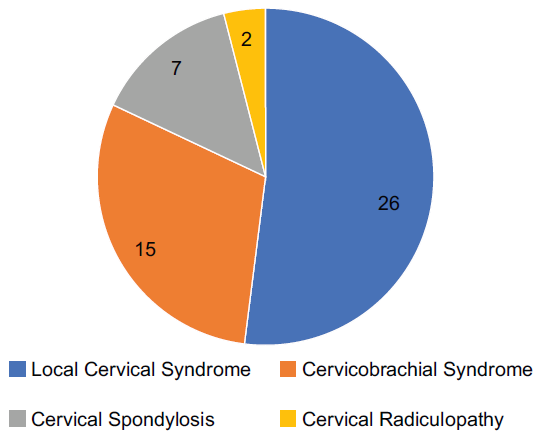Effect of physical therapy in daily life and work activities for people with chronic cervical pain syndrome
DOI:
https://doi.org/10.17532/jhsci.2021.1142Keywords:
Chronic cervical pain syndrome, physical therapy, pain, daily life activities, work activitiesAbstract
Introduction: Cervical pain syndrome (CPS), or pain in the neck, is defined as a set of symptoms that limit performing movements in the upper part of the back and last more than 1 day. When the mentioned symptoms last for more than 12 weeks, we talk about chronic CPS. It often represents the condition that results from disability. It is associated with poor posture, work in sitting position, stress, and long-lasting and repetitive movements. The aim of the study was to examine the effect of physical therapy on the degree of disability, pain intensity, and daily life and work activities of persons with chronic CPS.
Methods: The research was conducted in the health spa center “Reumal” Fojnica from June 2020 until July 2020. It included 50 subjects of both genders, more than 18 years old, and of all occupations, treated with physiotherapy procedures (transcutaneous electrical nerve stimulation, magnetotherapy, therapeutic ultrasound, and kinesitherapy in the form of McKenzie exercises). In addition, a pre- and post-treatment study analyzed the condition of the respondents at the first examination and the control examination after completion of treatment.
Results: By analyzing the results, we established that of the total number of respondents, 74% were female, and the average age was 57.36 years. At the end of the study, the degree of disability caused by neck pain was significantly lower (p < 0.05) than the degree of disability before the therapy. Discomfort caused by symptoms of CPS that occurred and interference with work before the therapy was significantly lower (p < 0.05) after the treatment program. Therapeutic procedures have reduced the pain intensity and improved the activities of everyday life.
Conclusion: The treatment with physical therapy procedures effectively reduces the degree of disability and pain intensity and improves people’s daily life and work activities with chronic CPS.
Downloads

Downloads
Published
License
Copyright (c) 2021 Eldad Kaljić, Edina Hadžipašić, Amila Jaganjac, Namik Trtak, Bakir Katana, Muris Pecar

This work is licensed under a Creative Commons Attribution 4.0 International License.










